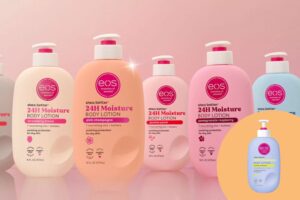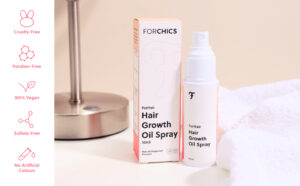The Process of Shampoo Manufacturing: From Concept to Shelf
Shampoo manufacturing is a meticulous process that involves numerous stages, from initial formulation to the final product landing on retail shelves. Understanding the entire journey helps highlight the complexity and care of creating high-quality shampoos. This article explores shampoo formulation and development steps, sourcing ingredients, manufacturing equipment and technologies, packaging solutions, and ensuring compliance with regulatory standards.
Steps Involved in Shampoo Formulation and Development
A shampoo’s creation begins with a comprehensive formulation and development phase. This stage is crucial as it sets the foundation for the final product’s quality, efficacy, and safety.
1. Market Research and Concept Development
Before formulation begins, extensive market research is conducted to identify consumer needs, preferences, and market gaps. This research informs the concept development, helping to define the shampoo’s target audience, desired benefits, and unique selling propositions.
2. Ingredient Selection
Based on the concept, scientists and formulators select appropriate ingredients that align with the desired benefits, such as moisturizing, volumizing, or anti-dandruff properties. Ingredients are chosen for efficacy, safety, and compatibility with other components.
3. Formulation and Testing
Formulators create initial samples, experimenting with different ingredient combinations and concentrations. These samples undergo rigorous testing for stability, performance, and safety. Stability testing ensures the shampoo maintains its quality over time, while performance testing evaluates its effectiveness in real-world conditions.
4. Sensory Evaluation
Consumer panels or sensory experts assess the shampoo’s texture, fragrance, and overall user experience. Feedback from these evaluations is used to refine the formulation further, ensuring it meets consumer expectations.
5. Clinical and Safety Testing
To ensure the shampoo’s safety, it undergoes clinical testing on human subjects. These tests check for potential skin irritations, allergic reactions, and tolerability. Regulatory compliance testing is also conducted to meet industry standards and regulations.
Sourcing Ingredients for High-Quality Shampoos
A shampoo’s quality heavily depends on its ingredients’ quality. Sourcing high-quality ingredients involves several key steps:
1. Identifying Reliable Suppliers
Manufacturers collaborate with reputable suppliers who provide high-quality raw materials. These suppliers must adhere to stringent quality standards and provide ingredient purity and safety documentation.
2. Evaluating Ingredient Quality
Each batch of ingredients is tested for consistency, purity, and compliance with specifications. This evaluation ensures that the ingredients meet the required standards for formulation.
3. Sustainable Sourcing
Many manufacturers prioritize sustainable and ethically sourced ingredients to meet consumer demand for environmentally friendly products. This involves verifying suppliers’ sourcing practices and choosing ingredients with minimal environmental impact.
4. Traceability and Transparency
Maintaining traceability of ingredients from source to finished product is crucial for quality control and regulatory compliance. Manufacturers keep detailed records of ingredient origins and processing methods.
Manufacturing Equipment and Technologies Used in Shampoo Production
Producing shampoo on a commercial scale requires specialized equipment and technologies designed to ensure consistency, quality, and efficiency.
1. Mixing and Blending Equipment
Large-scale mixers and blenders combine the ingredients into a homogeneous mixture. These machines must handle various viscosities and ensure uniform distribution of all components.
2. Emulsification Systems
Shampoos often require emulsification to combine water—and oil-based ingredients effectively. High-shear mixers and homogenizers create stable emulsions, ensuring a smooth and consistent product.
3. Heating and Cooling Systems
Temperature control is crucial during production. Heating systems melt solid ingredients, while cooling systems help stabilize the final product. Proper temperature management ensures ingredient efficacy and product stability.
4. Automated Filling and Packaging Lines
Once the shampoo is formulated, it is transferred to automated filling lines, where bottles are filled, capped, and labeled efficiently. Automation helps maintain hygiene, reduces manual labor, and increases production speed.
5.Quality Control Systems
Throughout the manufacturing process, quality control systems monitor critical parameters such as pH, viscosity, and microbial content. These systems ensure that each batch meets the required standards before packaging.
Try Xiangxiang Daily Now!
We Help You Launch New Products, And Continue To Grow. Try Us With 20% Off Your First Order!
Packaging Solutions for Shampoos: Trends and Innovations
Packaging plays a significant role in the success of a shampoo product, influencing consumer perception and convenience.
1. Sustainable Packaging
There is a growing trend towards sustainable packaging solutions, such as biodegradable, recyclable, and refillable options. Manufacturers are adopting eco-friendly materials to reduce their environmental footprint.
2. Innovative Dispensing Systems
Innovations in dispensing systems, such as pump bottles, flip-top caps, and squeeze tubes, enhance user convenience and reduce product wastage. These designs aim to provide a better user experience.
3. Attractive Design and Branding
Packaging design is crucial for attracting consumers. Eye-catching graphics, colors, and branding elements help products stand out on retail shelves. Manufacturers invest in design to convey the product’s benefits and appeal to the target audience.
4. Functional Packaging
Functional aspects, such as easy-to-hold shapes, travel-friendly sizes, and tamper-evident seals, are essential in shampoo packaging. These features improve usability and consumer satisfaction.
Ensuring Compliance with Regulatory Standards in Shampoo Manufacturing
Compliance with regulatory standards is essential for safe and legal production of shampoos. Manufacturers must adhere to various guidelines and regulations:
1. Good Manufacturing Practices (GMP)
GMP guidelines ensure products are consistently produced and controlled according to quality standards. These practices cover all aspects of production, from raw material sourcing to final product packaging.
2. Labeling Requirements
Shampoo labels must comply with regulations and provide accurate information about ingredients, usage instructions, and safety warnings. This transparency helps consumers make informed choices.
3. Safety and Efficacy Testing
Regulatory bodies require thorough testing to ensure that shampoos are safe and effective for their intended use. This includes testing for skin irritation, allergenicity, and product stability.
4. Environmental Regulations
Manufacturers must comply with environmental regulations related to waste management, emissions, and the use of certain chemicals. Sustainable practices and eco-friendly formulations are increasingly prioritized.
5.Certification and Approvals
Specific certifications, such as organic or cruelty-free labels, require adherence to particular standards. Obtaining these certifications can enhance a product’s appeal to conscious consumers.
Conclusion
The process of shampoo manufacturing, from concept to shelf, involves a series of detailed and carefully managed steps. Each stage is crucial in delivering a high-quality product, from initial formulation and ingredient sourcing to utilizing advanced manufacturing technologies and ensuring regulatory compliance. Understanding these processes highlights the complexity and dedication required to produce shampoos that meet consumer expectations and safety standards.
Table of Contents
Latest Blog Posts
Check out the latest industry trends and take inspiration from our updated blogs, giving you a fresh insight to help boost your business.





